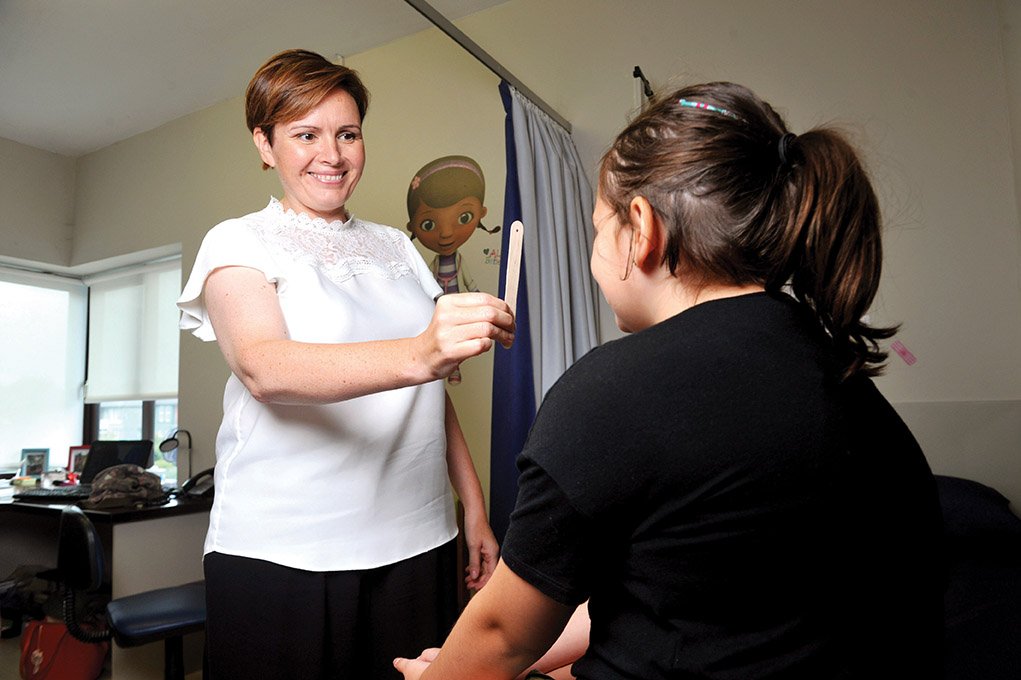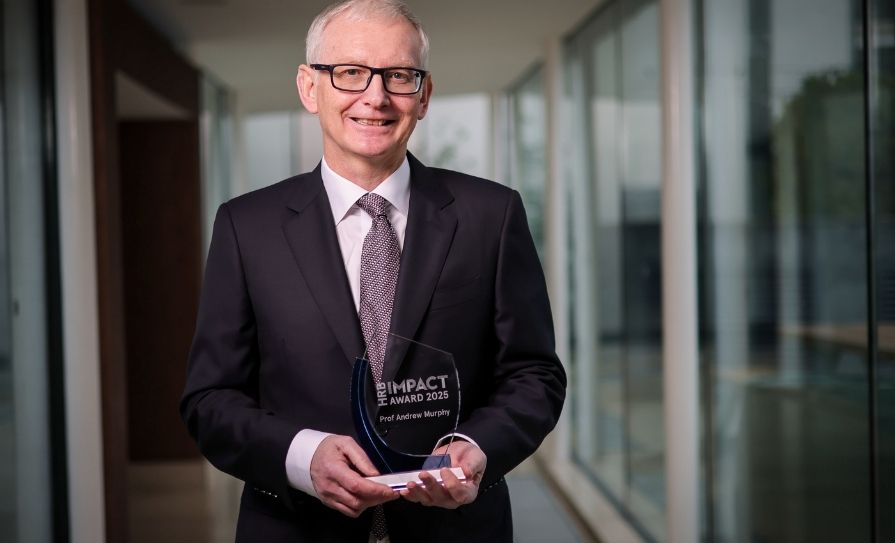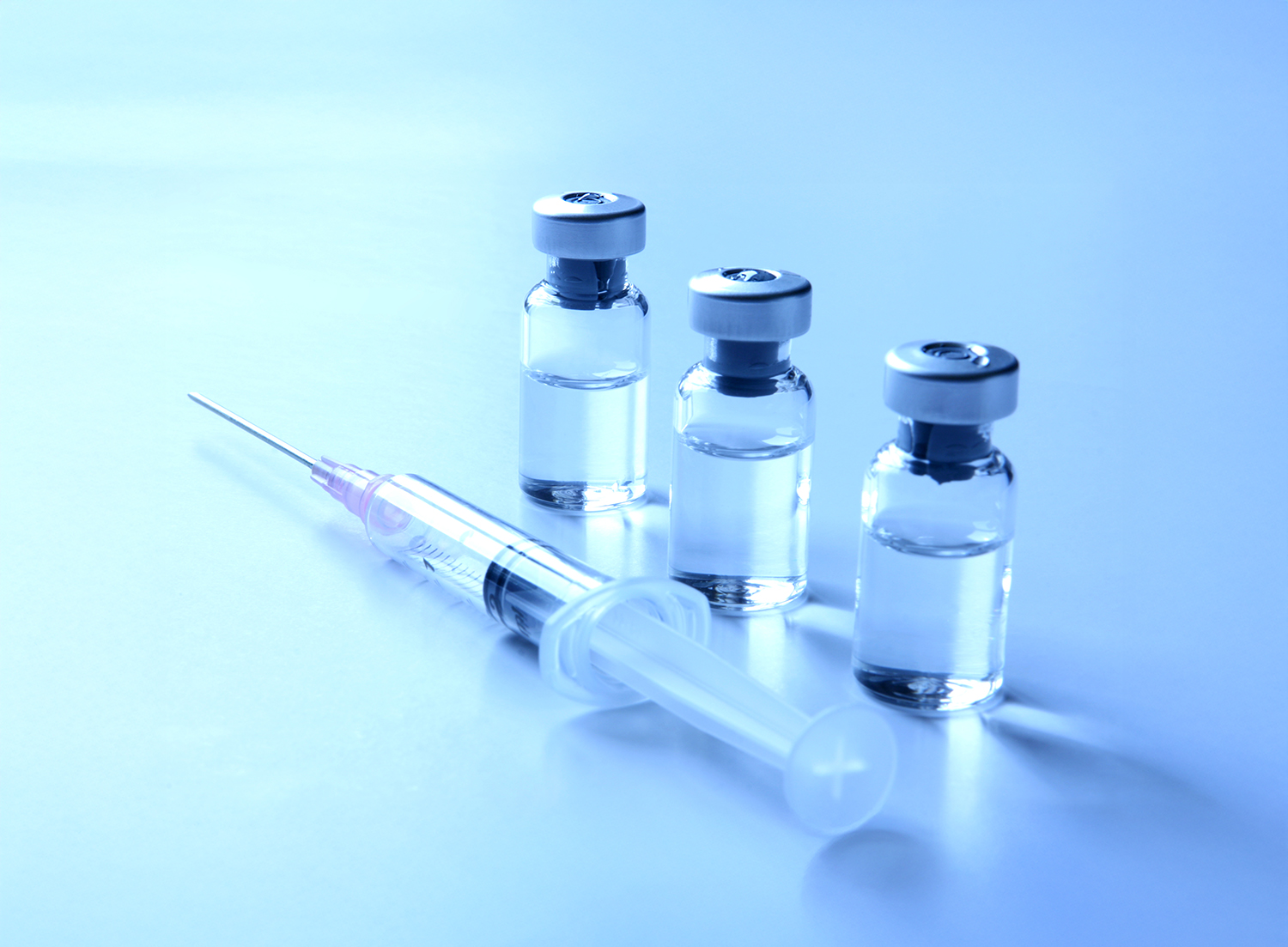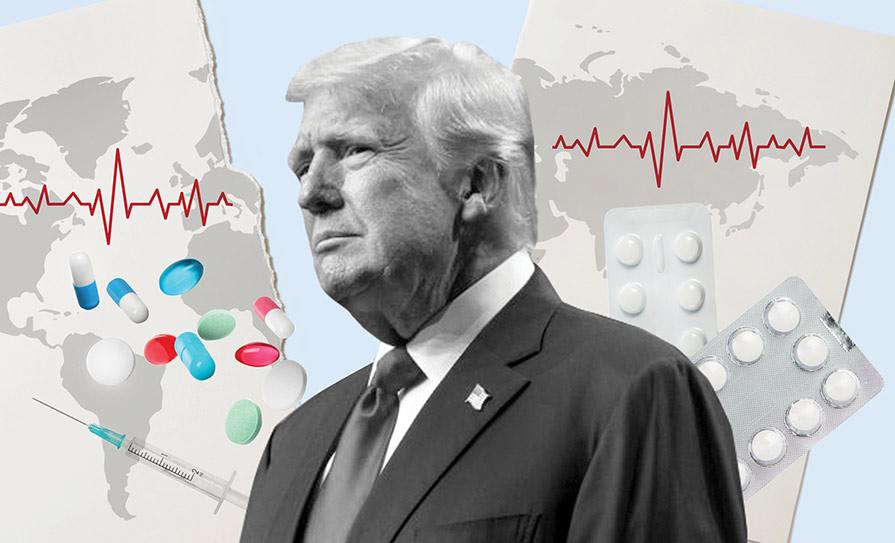Sports-related concussion has never been far from the headlines. Catherine Reilly speaks to Irish clinicians about the diagnosis and management of this form of brain injury in elite and amateur sport
Sports-related concussion can be a complex injury to diagnose and manage. According to the 2017 Concussion in Sport Group (CISG) consensus statement, most incidences of concussion in sport occur without loss of consciousness or frank neurological signs. Moreover, there is currently “no perfect diagnostic test or marker that clinicians can rely on” for an immediate diagnosis in the sporting environment.
“Because of this evolving process, it is not possible to rule out SRC [sports-related concussion] when an injury event occurs associated with a transient neurological symptom,” outlines the statement, which provides an overview of best practice in concussion prevention, diagnosis and management.
In all suspected cases, the player “should be removed from the playing field” and assessed by a physician or licensed healthcare provider.
These principles are also underlined by Dr Alan Byrne, Medical Director, Football Association of Ireland (FAI), and doctor with the Irish senior men’s international football squad.
“Concussion is a difficult diagnosis for doctors and physiotherapists,” Dr Byrne tells the Medical Independent (MI). “It is not like pulling a hamstring or looking at a scan… It is a clinical diagnosis.”

Sometimes a concussion is obvious, but often this may not be the case. Concussion may evolve over a period of hours. “The problem is when it is in that grey area, you are stuck as a doctor or a physiotherapist thinking, ‘is this a concussion or not?’ My advice would be always if you have any concern, take them out of the game.
“If you see an incident or a clash of heads or someone getting kicked, it makes the decision easier. But it is a difficult diagnosis.”
‘Players are patients’
A fundamental principle is that ‘players are patients’ who deserve the same level of care afforded to patients in a clinic setting, according to Dr Byrne. He says the norms of medical ethics must apply.
“A really important issue is that as a team doctor, you must make sure to think with your head and not your heart. So if you think somebody is concussed, if you have got a concern — take them off. It is as simple as that.”
As Dr Byrne readily acknowledges, however, professional sport is a unique environment for a healthcare professional. A decision to withdraw a player from the field of play will also remove them from their workplace.
“All players, in my experience, want to play on. You can be caught in the emotion of the game and that is why I say [to myself and medical colleagues] to make sure to think with your head, and not with your heart.”
UEFA and FIFA have prescribed that, in the event of a suspected concussion in their competitions, the referee stops the game for up to three minutes to allow the player to be assessed by the team doctor.
However, UK brain injury association Headway has called for head injury assessments (HIAs) to be introduced following a number of alarming incidents in the professional game.
In May, Headway issued a statement after “a long line of incidents that have called into question the sport’s commitment to tackle this important issue”. In particular, it cited the aftermath of Tottenham Hotspur defender Jan Vertonghen’s clash of heads with teammate Toby Alderweireld in the UEFA Champions League semi-final first-leg match against Ajax.
“After being assessed on the pitch for five minutes, the player briefly returned to the match before quickly being removed permanently after appearing to stagger. He then had to be helped from the pitch, with the player later stating that he had fainted,” according to Headway.
Mr Luke Griggs, Director of Communications with Headway, acknowledges that off-pitch assessments are not perfect and “there is a good argument to suggest that even a 10-minute off-pitch assessment will not provide all the answers due to the potential delay in presentation of symptoms”.
However, he adds that conducting off-pitch assessments with the use of temporary substitutions “is better than asking medical teams to make immediate judgements under the gaze of 50,000 spectators and television cameras”.
Dr Byrne notes that rugby has been the “prime mover” in terms of HIAs. It could be a step in the right direction, he indicates, but ultimately it would not resolve the difficulty of being certain about a pitch-side concussion diagnosis.
Another suggestion from Headway was for “independent doctors” (ie, doctors not employed by the team/association) to make decisions on whether to withdraw a player due to suspected concussion.
It is reasonable to ask of sports doctors as a body of professionals, “when somebody is paying your wages, are you independent or not?” acknowledges Dr Byrne.
However, he adds: “I think it helps when you are a doctor who knows the players, to be able to make a decision, and that is where I go back to making the decision with your head and not heart. Don’t get caught up in emotion of the game. It doesn’t matter how big or small the game is — that is a key message, a difficult one but really important one.”
Return to play timelines
Interestingly, the FAI dispensed with minimum time frames for graduated return to play following concussion. This is in contrast to the Gaelic Athletic Association (GAA) and Irish Rugby Football Union (IRFU), for example, whose guidelines have minimum time frames (guidance from all the associations state that players should obtain medical clearance before recommencing competitive action/full-contact training (GAA), full-contact practice (amateur rugby union), and returning to play (football)). The FAI guidance says most concussions resolve over seven-to-10 days but some last considerably longer.
The issue of a timeline was debated by the FAI’s medical committee, explains Dr Byrne.
“A timeline becomes a deadline for a lot of people,” he says. “So if you say it is 14 days, or six days, or 23 days, that then becomes a deadline for the player, the coach, the parent, in my view. That has been my experience — ‘you have had your two weeks, you must be right’. The player knows that. They forget the word ‘minimum’ in the guideline and it becomes a deadline. I think we are probably the only association that has taken the timeline out, for that reason. In time, I think it will be shown to be the correct decision.
“I know there are timelines in lots of other codes and in other football associations, but I think that becomes a deadline and that is something that has caused problems —where there is [a] game coming up, a final or semi-final, and the two weeks have been dealt with but the player is still concussed.
“We can all identify with that mindset but that is not a good mindset for a player, professional or otherwise. The timeline is a huge issue that I don’t think we have got to grips with.”
There is room for improvement in Irish elite football. Dr Byrne says a medical colleague in the FAI, Dr Natalia Bratu, has undertaken research into the knowledge and attitudes of concussion in elite Irish football players (youth, senior, male and female international teams and League of Ireland).
“And it did show, unfortunately, players’ lack of awareness and it is something we are focusing on and looking at our coach education programme, to try and improve that.” According to Dr Bratu’s research, 70 of 299 respondents had experienced concussions, but only 46 of these 299 had previously had concussion education, and cohorts had recorded poor behaviours and attitudes.
Community
Dr Byrne also works as a GP in south Dublin and finds that awareness of sports-related concussion has hugely improved in the community. Nevertheless, medical professionals “need to be concerned” about the level of assistance available to players in various sports at an amateur level, when potential concussions occur.
Currently, the FAI does not undertake any monitoring activity of affiliated amateur leagues, in terms of incidences of concussion and adherence to FAI guidance.
This guidance, which has been sent to leagues, states that any player with concussion or suspected concussion should be removed from the field of play immediately and safety and should not return to play, training or other physical activity on the same day. Players who suffer a concussion should consult with their medical practitioner before returning to play.
The GAA, like a number of other sporting organisations, has promoted awareness of concussion among coaches and participants. But it also has no system of monitoring adherence to guidance.
Mr Brendan Connolly, GAA Player Welfare Officer, tells MI the Association’s guidance/protocols are provided to players through county boards and clubs and via its learning portal website. There are no sanctions for clubs/counties who do not adhere to guidance.
“Of course, it is such a hot topic but at the moment, we have nothing in the rules that if they weren’t to follow best practice [they could be sanctioned],” confirmed Mr Connolly.
Under the GAA’s concussion guidance, adult players suspected of having a concussion must have adequate rest of at least 24-to-48 hours and then follow a return-to-play protocol. Adult players should not return to full-contact training/matches for at least one week from when the injury has been diagnosed.
Players aged under 18 suspected of having a concussion must rest for a minimum of 48 hours and then follow the protocol. They should not return to full-contact training/matches for at least two weeks from when the injury has been diagnosed.
Mr Connolly says the GAA’s latest concussion guidance was reviewed and released in early 2018 and there are no changes imminent. “What we would say [in the guidance] is, no player should return to play without a medical cert,” he points out.
The GAA captures data on injuries at senior inter-county level but not at other levels of Gaelic games.
MI requested comment from the IRFU but there was no response by press time.
Underage sports
Awareness of concussion in Irish amateur underage sports has vastly improved in recent years, according to Dr Niamh Lynch, a Consultant Paediatrician with a special interest in paediatric neurology, who runs a concussion clinic at Bon Secours Hospital, Cork.
Conversely, however, some parents are excessively anxious about the possibility of their children having a concussive episode and this may restrict participation in sports.
“You should respect the injury,” Dr Lynch tells MI, “but I don’t think it should put people off playing sports. It is important we stay balanced about it and recognise the benefits of sport in terms of mental and physical health — and respect the injury.
“There has been such a change in how coaches and parents approach it. It is, for the most part, really, really good that they are now recognising and respecting this injury. Overall, it is very positive, but there is a smaller cohort of individuals who have become extremely anxious about [the possibility of] concussion and that doesn’t help anybody really.”

In the past, there was pressure from managers and coaches for a player to return to play too soon, but “definitely not anymore”.
“There used to be a time when that was the case, but now it is almost as if coaches are afraid somebody might go back too soon. The GAA has been very good and proactive in pushing the awareness of concussion.
“I think the attitude [from sports coaches] has changed and it is filtering down from the high-level athletes — children will always imitate what they see and you can definitely see the younger athletes saying ‘well, so-and-so went off because he had a concussion, and I think I might have a concussion so I should go off’. It is great to see that filtering down.”
In April, Dr Tadhg Crowley, GP and Medical Officer for the Kilkenny Senior Hurling Team, told the IMO annual conference that while doctors had largely advocated rest and avoidance following a concussive episode, studies in the US have shown this does not necessarily help and may have negative effects for some people.
He spoke about the Targeted Evaluation and Active Management (TEAM) approach to treating concussion, which is focused on each patient rather than a one-size-fits-all approach.
The TEAM system was developed by the University of Pittsburgh Medical Centre (UPMC) in Pittsburgh, US. Dr Crowley and Dr Lynch are among a number of Irish clinicians participating in an Irish concussion network that is trialling this approach, in partnership with UPMC, Affidea and Bon Secours Health System.
According to Dr Lynch, “if a child or adult is told ‘you can’t play for two weeks’ or three weeks, or whatever that is, going home and sitting in a dark room and doing nothing isn’t going to help you to get better”.
After some rest, actively rehabilitating the vestibular and ocular systems is important, otherwise recovery will be delayed. Typically, patients referred to Dr Lynch are those for whom symptoms have been ongoing.
She also finds that young people can consider timelines in return to play guidance as “a deadline”.
“Very often, what I find is, a young guy will come to me and he has gone back to sport after his two weeks off and his symptoms come back straight away, and I will ask, ‘well, were you better?’ And he’ll say, ‘no, but I sat out my two weeks’. He sees that as a deadline, but it is a guideline.”
However, she says removing timelines from guidance “would risk athletes taking inadequate time off”.
Ideally, all children returning to play after concussion would have an exertion test with physiotherapy and a final post-injury neurocognitive test to ensure return to baseline, according to Dr Lynch. “If we gradually shift to this system, based on clinical findings of the individual, as opposed to broad guidelines, we will minimise the risk of an athlete returning too soon to play.”
Much of the debate about sports-related concussion has centred on rugby, with calls by some clinicians for rule changes at youth level.
Dr Lynch has not had many patients with concussions arising from underage rugby, “and I am not sure what that says”, she adds. “I think [the sport] has done a lot already in terms of managing it and recognising it. But there is no doubt, young people are getting bigger and stronger, especially young boys. And there is no doubt they play in a way that imitates or aspires to imitate that of the top level.”
The paediatrician says she is not an expert on the rules of rugby but is aware of arguments around fundamental rule changes in underage rugby and counter-arguments that this may prohibit learning and increase injury risk in an adult cohort later on. “It is not one I can answer,” she adds.
“To be fair, across all the sporting codes, they are making an effort and for the most part, it is a ‘good news story’. I haven’t seen anything from any of the sporting disciplines that has shocked me, in terms of the way concussion has been managed; there has been nothing where I have said, ‘oh my God, they have made a hames of that’. They have always managed it appropriately from the time the child got the injury to the follow-up with the GP.”
TCD tracking health of retired pro rugby players
The effects of a professional rugby career on players’ long-term physical and mental health is a controversial topic in rugby nations.
A multidisciplinary team of researchers at Trinity College Dublin (TCD), in collaboration with Rugby Players Ireland, are investigating the general health of retired elite athletes, with a particular focus on impact sports and brain health. The study has enrolled former Irish professional male rugby players and retired female Irish international rugby players, with a control group of former elite athletes from Rowing Ireland.
The research is examining various aspects of brain health, including general mental wellness and cognitive functioning.
Researchers are also investigating how former athletes fare on an emotional and mental level following retirement from full-time sport.
Dr Fiona Wilson, Associate Professor in Physiotherapy, TCD, and one of the principal investigators (PIs), says approximately 60 male retired rugby players, 20 female retired rugby players and 20 former rowers have been tested to date.
The tests have included cognitive tests, questionnaires covering areas such as mental health and concussion history, as well as analysis of body fat composition.
“It has gone really well. We are going to close the testing phase for now and we will restart again in the autumn,” Dr Wilson tells MI. “What we aim to do with this is have a longitudinal study, so that it goes on over a number of years, because that will provide us with the most useful data.”

The data on the female retired rugby players has not yet been analysed. Dr Wilson says their participation is one of the novel aspects of the project, “as they tend to be largely ignored in research programmes”.
There has been some preliminary analysis of data on male retired professional rugby players and one area under examination is concussion history and its association with mental health.
“So it is quite interesting; we have had quite high reports of problems in mental health, anxiety and depression — about 30 per cent of the rugby [professional] cohort have reported problems. We looked at that to see if it was associated with concussion history… because there have been some indications that athletes are suffering from mental health problems because of their exposure to head trauma. But actually, when we had a look at that, there was no association there and [mental health issues] was more associated with the length of their professional career.”
The period of time the former professional rugby players have been retired varies, according to Dr Wilson. The age spectrum of participants is late 20s/early 30s, into the 50s. The average years spent playing professional rugby is nine and the average age of participants is 38 years old. This group has reported an average of 7.5 concussions in their lifetime.
Asked of any concerning trends in brain health from the study, which is still at a relatively early stage, Dr Wilson said “not at the moment”.
The numbers of former rugby players and rowers reporting depressive symptoms in retirement is an early finding of interest.
However, it is not only negative outcomes associated with a sporting career that are being explored. It is known that exercise protects brain health and researchers are interested in finding out if this effect persists into retirement and how the positive effects may be offset by involvement in an impact sport.
The focus is on building this research project over time and letting the data speak for itself.
“That is what is so good about having Rugby Players Ireland on board. It almost becomes part of their welfare programme, that this will be there and eventually will be able to start looking at patterns and being able to flag people early on,” says Dr Wilson.
“As the data builds up, we’ll have a better idea about what is going on… the sport only went professional in the mid-1990s, so those players are only really in their early 50s now. Maybe in the next 10 years, we might be seeing something significant going on, and we will really have to hold our nerve and make sure we are doing the science properly.”
The research team has been keen to avoid selection bias, which Dr Wilson says has been greatly helped by Rugby Players Ireland inviting members to take part.
The team will be presenting initial findings at the upcoming Neurotrauma Conference in Pittsburgh, US, and anticipate that their first papers will be out later this year.
Other PIs are Dr Aine Kelly (Neuroscience), Prof Fiona Newell (Psychology), Ms Joyce Cunningham, a PhD candidate, and Dr Ella McCabe, Clinical Psychologist with Rugby Players Ireland.
Symptoms and signs of sports-related concussion
The suspected diagnosis of sports-related concussion (SRC) can include one or more of the following clinical domains:
Symptoms: Somatic (ie, headache), cognitive (ie, feeling like in a fog) and/or emotional symptoms (ie, lability).
Physical signs (ie, loss of consciousness, amnesia, neurological deficit).
Balance impairment (ie, gait unsteadiness).
Behavioural changes (ie, irritability).
Cognitive impairment (ie, slowed reaction times).
Sleep/wake disturbance (ie, somnolence, drowsiness).
According to the 2017 Concussion in Sport Group consensus statement, if symptoms or signs in any one or more of the clinical domains are present, an SRC should be suspected and the appropriate management strategy instituted.
Because SRC is often an evolving injury, and signs and symptoms may be delayed, erring on the side of caution (ie, keeping an athlete out of participation when there is any suspicion of injury) is important. The majority of SRCs occur without loss of consciousness or frank neurological signs.













Leave a Reply
You must be logged in to post a comment.